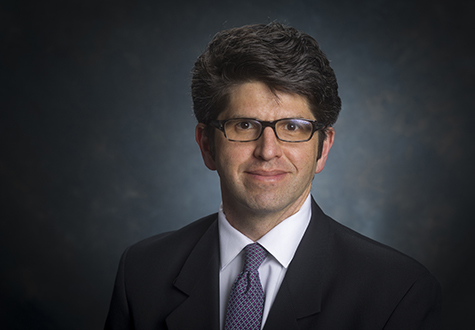 Paul Muntner, Ph.D.Nearly half of American adults have high blood pressure, according to a new report by the American Heart Association. The findings found that 45.6 percent of adults were hypertensive between 2011 and 2014 under the new blood pressure guidelines released in 2017. Under the previous guidelines, only 31.9 percent of United States adults had high blood pressure during the same time frame.
Paul Muntner, Ph.D.Nearly half of American adults have high blood pressure, according to a new report by the American Heart Association. The findings found that 45.6 percent of adults were hypertensive between 2011 and 2014 under the new blood pressure guidelines released in 2017. Under the previous guidelines, only 31.9 percent of United States adults had high blood pressure during the same time frame.
Paul Muntner, Ph.D., an epidemiologist at the University of Alabama at Birmingham School of Public Health and Vice-Chair of the American Heart Association’s statistic committee that produced the AHA report, says the increase is due to the recently updated American College of Cardiology and American Heart Association hypertension guideline, which lowered the blood pressure levels used to define hypertension from 140/99 mm Hg to 130/80 mm HG.
While the increase in adults with hypertension may seem alarming, Muntner says the new guideline will make people more aware of their health.
“It is an opportunity for patients and their doctors to have a conversation about their blood pressure and what they can do to lower their blood pressure and lower the risk of having a heart attack or a stroke,” Muntner said. “Not everything involves medications. There are several lifestyle changes that can be done to lower blood pressure, including increasing physical activity, weight loss and reducing salt intake.”
The number of adults living with a cardiovascular disease also increased. The report found that at least 9 percent, or 24 million, of U.S. adults 20 years old or older had cardiovascular disease defined by a coronary heart disease, stroke or heart failure.
“24 million adults is a large number of people in the United States,” Muntner explained. “I think recognizing that this number is large and highlighting the need to focus on prevention is the best way to lower that number in the future.”
If hypertension is included in the list of cardiovascular diseases, the total percentage increases to 48 percent, or 121.5 million, of U.S. adults 20 years old or older living with some type of cardiovascular disease in 2016.
The report lists heart disease as the No. 1 cause of death and stroke as the fifth leading cause of death in the United States in 2016, which are the same rankings as in 2015.
Globally, 17.6 million people died from a cardiovascular disease in 2016, which is a 14.5 percent increase from 2006.
“There have been several important studies over the past year showing that the prevalence of risk factors common in the United States is becoming more common in other world regions and economically developing countries, such as hypertension, diabetes and obesity,” Muntner said. “These conditions are becoming more common due to more sedentary lifestyles, as well as increasing obesity.”
The report also looked at sodium intake, sleep and obesity rates, all factors that Muntner says could improve heart health. The findings were published in the American Heart Association’s journal, Circulation, on Jan. 31.